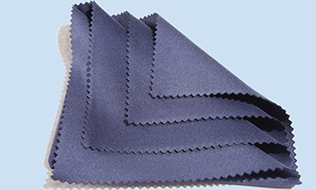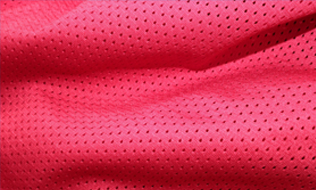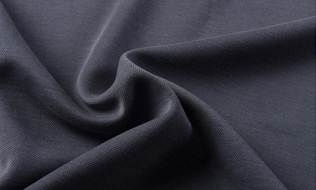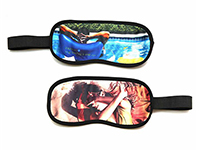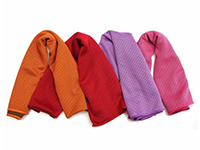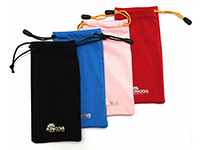The earliest textile fibers used by people were natural fibers - cotton, hemp, wool, silk, among which, silk is one of the best wearing fibers and its linear density is about 1.0dtex. The originally developed chemical fibers could only reach a linear density of 5-6dtex and failed to provide the wearable comfort or beautiful appearance of silk. With the development of the synthetic fiber industry and increased demands for synthetic fabric properties, the industry made breakthroughs in imitating natural fibers in the 1970’s. However, simply imitating the natural fibers proved insufficient. In the 1980’s microfiber was finally developed and it offered better performance at a lower cost compared to natural fibers. The so-called “new synthetic fabric” is a new fiber material based on microfiber and it features a diameter of about 5 microns or less.
- Good Cleaning Effect
The diameter of a single microfiber is about 1/10 that of a human hair, and the fineness is less than 0.186tex (which means, 1000m long microfiber only weighs 0.186g). The cross section of this fiber is a triangular wedge shape, which increases its surface area. Dust will be trapped by the fiber when used as a dusting cloth, maximizing its cleaning capacity compared to ordinary towels. - Strong Water-absorbing
The siphonage phenomenon will happen when the fiber is fine enough, so its water-absorbing ability will be strong. The water-absorbing capacity and speed of a microfiber towel are more than 7 times that of an ordinary towel. - Quick drying
This microfiber has excellent capillary action because of its ultra-fine diameter, thus it features strong water-absorbing properties but it is also quick drying.
Multiple processes are needed to process raw silk into qualified microfiber. Besides strictly checking every process, Kingda also has strict requirements for choosing raw materials and manufacturing machines.
- Knitting
- Dyeing
- Setting
- Sanding
- Fabric Inspecting
- Imprinting
Logo - Inspection Packaging
- Shipping
If you are looking for a direct source of microfiber cloth and microfiber product manufacturing factory, Kingda will be your ideal choice. We always use the quality raw materials, and are equipped with complete equipment sets such as circular loom machine, dyeing machine, stenter machine and textile finishing machine to achieve the quality standards. We supply microfiber eyeglass cleaning cloths and microfiber eyewear pouches for more than 60% of eyewear brands all around the world. With the factory covering an area of more than 5000 square meters, we produce 10 million microfiber products each month, including screen cleaning microfiber cloths, eyeglass cleaning cloths, microfiber towels and so on. No matter you have a large or small order, we will provide you high quality products with fast delivery and low cost.
The microfibers in our cloth are primarily polyester and nylon fiber. The polyester makes the material high tensile and durable, the nylon allows for quick absorbing and drying. This makes the microfiber cloths stain resistant, washable, reusable and easy to work with. We have a complete selection of microfiber cloths with different fiber contents, designs, patterns colors, sizes, uses, etc. The quality microfiber cloth can be made into different microfiber products including microfiber cleaning cloths, car wash towels, micfrofiber screen cleaners, glass wipes, dust cloths for furniture cleaning, lens cleaning cloths, mopping pads. To date, the microfiber cleaning cloth is a common type of cleaning product and cleaning tool, allowing for cleaning with ease, polishing without streak, protection without scratch.
According to different uses, we made some microfiber products shown below:

